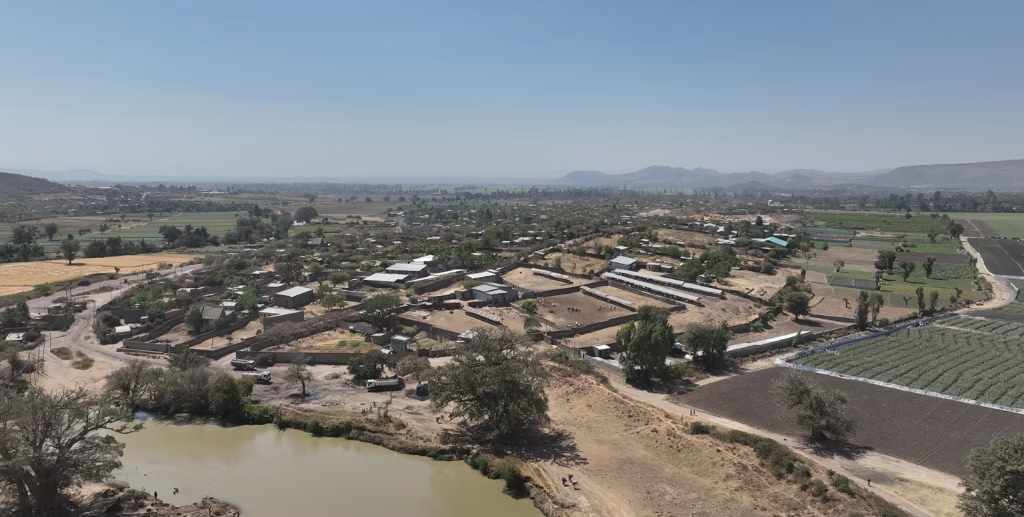In Ethiopia, water is much more than a resource: it is the thin thread that holds together agriculture, communities, and resilience. But it is also a threatened resource—on one side by the growing pressure of the climate crisis, and on the other by the need for adequate tools to understand, monitor, and manage it sustainably. It is precisely in this context that the project for improving Integrated Water Resources Management (IWRM) in the Webi Shebele, Awash, and Danakil river basins takes place, financed by the European Union and implemented by the Italian Agency for Development Cooperation (AICS) in coordination with the Ethiopian Ministry of Water and Energy.
A project that focuses on building local capacities, institutional cooperation, and the application of the best available scientific knowledge. CIMA Research Foundation is one of the two technical partners (together with CNR) in this challenge: it brings expertise in modeling, training capabilities, and a systemic approach to hydrometeorological monitoring. At the heart of the intervention is the Continuum hydrological model, developed to continuously simulate the processes that regulate the water cycle, from soil to atmosphere, and to support strategic decisions on water security, risk management, and sustainable planning.
Training, cooperation, and a shared vision
July 15, 2025 marked a key milestone: the first training module dedicated to the Continuum model was launched in Addis Ababa, aimed at the Ethiopian Ministry of Water and Energy (MoWE), the Ethiopian Meteorological Institute (EMI), the Water & Land Resource Center, and several local universities. During this meeting, researchers from CIMA Research Foundation provided an in-depth overview of the model’s structure, its hydrological foundations, and its potential applications, particularly for water resource management and the prediction of extreme events.
This was not only a training session, but an exercise in sharing knowledge and building trust between local actors and international partners. As Andrea Libertino, a researcher at CIMA Research Foundation, explained: “Hydrological modeling is not just a technical matter: it is an act of responsibility towards the future. Every calibrated parameter, every data point discussed together, contributes to building a fairer system, capable of responding to people’s needs and to the impacts of climate change.”
The training program will continue in August with more advanced modules, dedicated to the practical use of the model, calibration, and application in real scenarios. The goal is twofold: to strengthen the technical skills of local professionals and to ensure the long-term sustainability of the system.
New alliances for climate resilience
Alongside training, the project has taken another important step: a new technical agreement between EMI and AICS, with the support of CIMA Research Foundation. The agreement aims to strengthen national hydrometeorological services, a key element for more resilient and informed water resource management.
Specifically, the agreement provides for the installation of 20 new automatic meteorological stations and the technical training of EMI personnel for their management and maintenance. In addition, capacities will be strengthened in the use of seasonal forecasts and climate projections, with the aim of integrating these tools into decision-making processes related to water use.
This infrastructural and human investment will reduce uncertainty related to climate variability, improve resource planning, and allow for better management of phenomena such as prolonged droughts, sudden floods, and water stress in productive sectors and in people’s daily lives. “This agreement represents an important milestone, not only for the project and for AICS, but for Ethiopia, enabling better integration of hydrometeorological services across different institutions,” said Marco Landi, AICS Program Manager for the IWRM initiative.
Towards a dynamic and participatory monitoring system
As part of a process of collaboration and exchange, on July 16, 2025, CIMA Research Foundation conducted a technical workshop with the participation of senior technical staff from the Ministry of Water and Energy, dedicated to assessing the water balance and strengthening analytical capacities in the three basins targeted by the project. It was a collaborative laboratory where scientists, public officials, and local stakeholders discussed approaches, identified gaps in the available data, and jointly outlined the guidelines for developing an operational real-time water balance monitoring system.
The hydrological complexity of Ethiopia requires tools that are at once reliable, adaptable, and understandable. And it is precisely in this direction that the joint commitment of the partners involved is moving: to create an integrated system capable of supporting the sustainable planning of river basin development, promoting a culture of water that is inclusive, data-driven, and future-oriented.
As Luca Trotter, drought expert at CIMA Research Foundation, concluded: “Real change begins when science meets governance. Our goal is to transmit not just a model, but a shared capacity to read the territory and to adapt, together, to change.”

